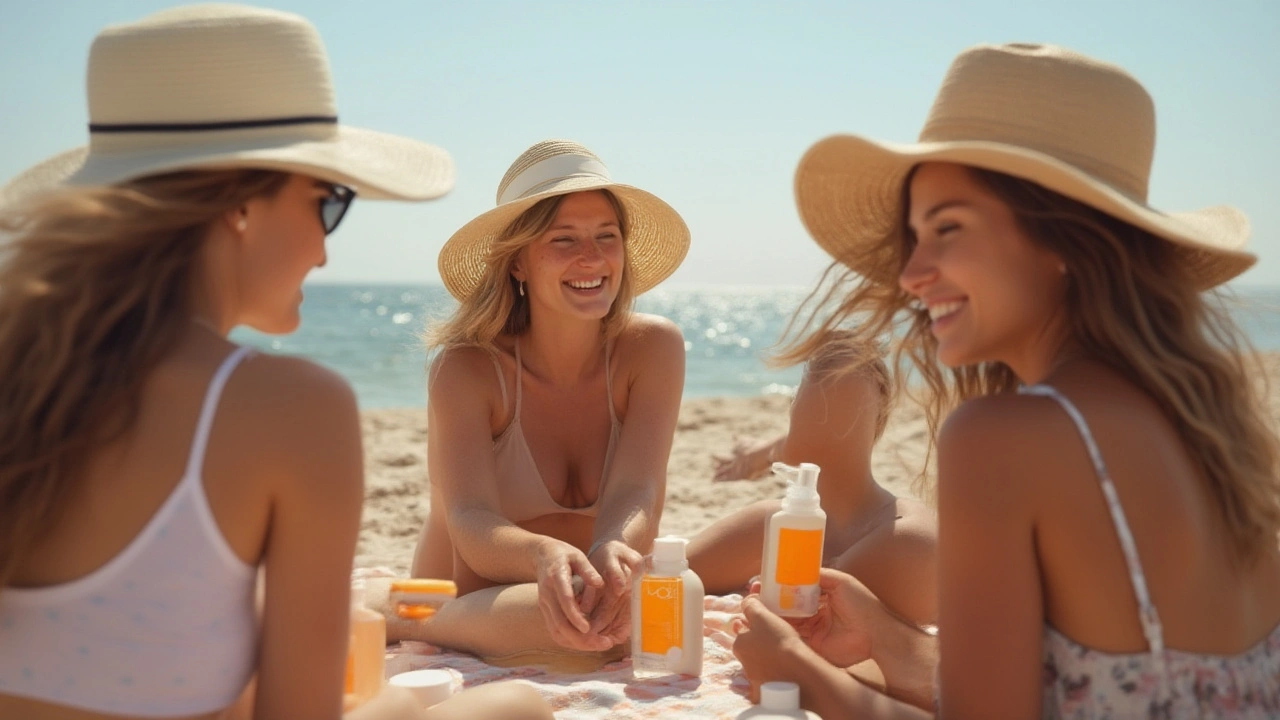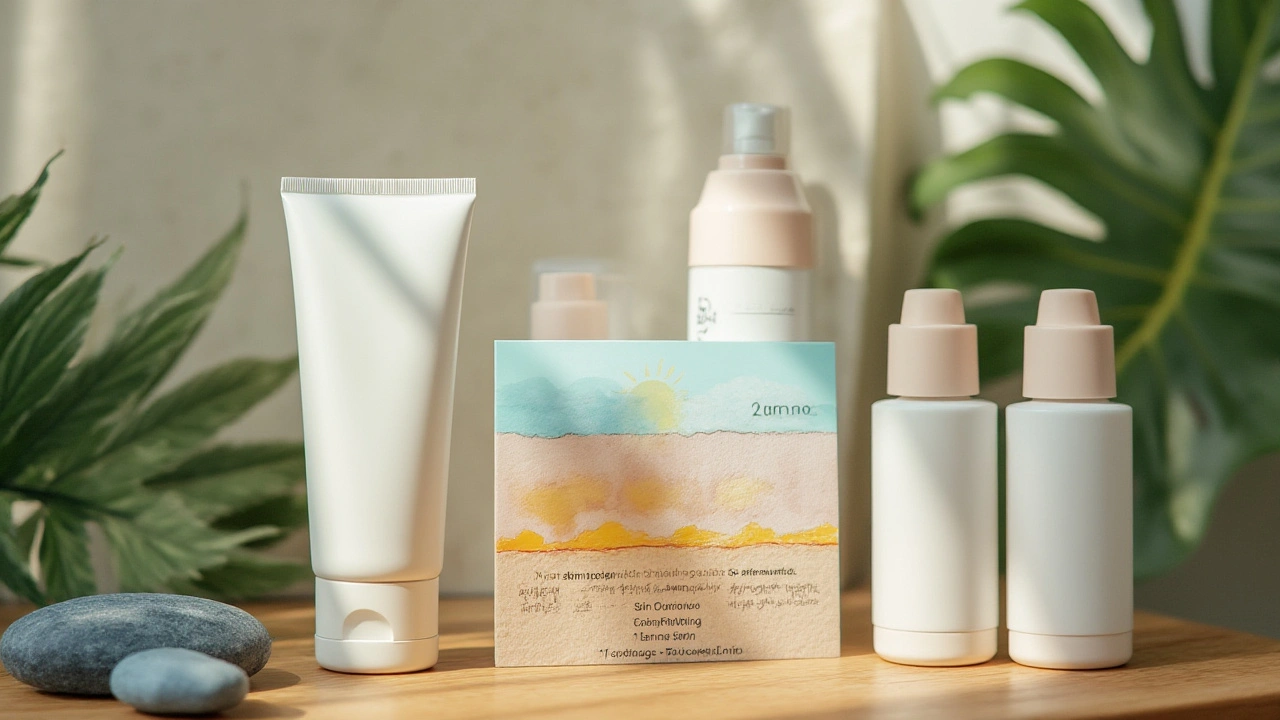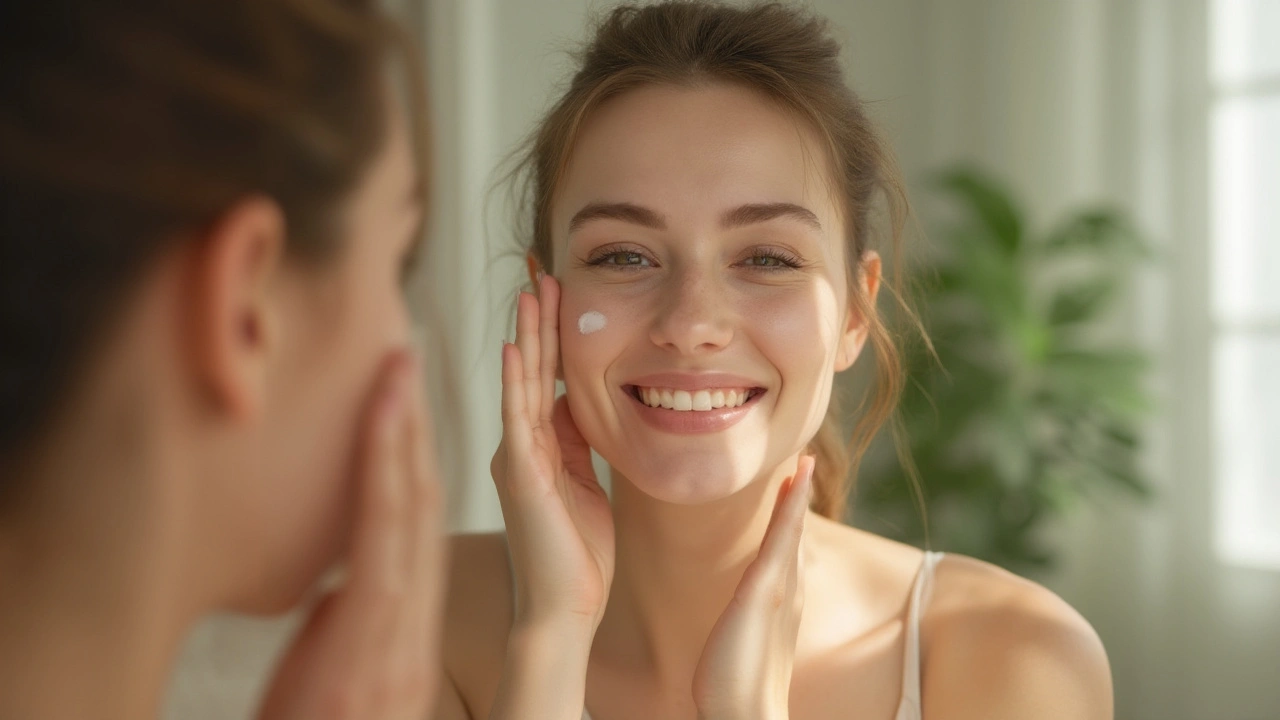Hot sun on your cheeks can feel like a slap if you’ve got rosacea or sensitive skin. Forget lounging poolside: For lots of folks, getting caught without sun protection means bright red, stinging skin—and maybe even regret for days. Not everyone gets it. Some people tan easily while others, like those of us fighting rosacea, practically catch on fire under UV rays. Bramble, my dog, at least has fur for backup. Humans aren’t so lucky. A growing pile of dermatology research now connects sun exposure directly with red flare-ups, increased sensitivity, and long-term skin damage—especially if you’re prone to irritation. The good news? Not every sunscreen burns or clogs your skin. Today’s mineral SPF formulas are game changers for people who need extra gentle, effective sun protection without the drama of redness and stinging.
Why Mineral Sunscreens Are the Best Bet for Rosacea and Sensitive Skin
When shopping for sunscreen, those with sensitive or rosacea-prone skin have one main rule: stick to mineral options. Chemical sunscreens sound smooth in advertisements, but the ingredients like oxybenzone, avobenzone, and octinoxate can make sensitive skin downright angry. These chemical agents absorb UV rays and trigger chemical reactions in your skin, leading to warmth and—unfortunately for many—burning or stinging sensations. Now, mineral sunscreens aren’t perfect either, but for most, they come with far fewer surprises. The two stars you’ll see on labels are zinc oxide and titanium dioxide. They stay on the skin’s surface and reflect rays away, instead of changing things up at the cellular level.
Zinc oxide especially is famous for being gentle. Pediatricians even swear by it for diaper rash! When you rub on a mineral formula, you get a physical shield against the sun, with bonus points for anti-inflammatory properties. Some dermatologists go as far as calling zinc a “rosacea-friendly” ingredient. It soothes irritation while protecting skin, and recent reviews found zinc-based sunscreens to be less likely to cause new breakouts or rashes than traditional SPF.
Another upside? Mineral SPFs work right away. With chemical types, you have to wait 20 minutes for them to sink in. If you’re running out with the dog or chasing kids, who has time for that?
Many people ask about the white cast. Sure, older formulas left you looking like a mime, but companies have quietly gotten way better. Tinting, micronized minerals, and newer blends disappear into most skin tones—without stickiness. There’s real progress here.
Spotting the Wrong Ingredients: Triggers That Make Rosacea Worse
The sad truth: Rosacea-prone skin has a long list of triggers hiding inside everyday sunscreens. If you're not reading the back label, you're asking for trouble. Besides the obvious chemical filters, a bunch of extras commonly sneak in and deserve side eye:
- Fragrance and essential oils (they can sting and trigger redness)
- Alcohols (break down skin’s barrier, increase dryness and irritation)
- Preservatives like methylisothiazolinone (tough to pronounce, even tougher on skin)
- Certain silicones and film formers (can clog pores and trap heat)
- Dyes (usually unnecessary and risky for reactive faces)
Dermatologists always recommend surprising simplicity. Look for formulas labeled ‘hypoallergenic,’ ‘fragrance-free,’ and with as few ingredients as possible. As always, test a new product on your arm before slathering it all over your sensitive zones. Oddly enough, even “clean” or “natural” sunscreens may come packed with irritating oils and herbal extracts. Lavender, peppermint, and citrus oils delight noses—but not hot, red cheeks. Real sensitive-skin favorites often read like a chemistry test: water, zinc oxide, a little glycerin, and mineral oil.
If you want to dig deeper into how sun damage and sunburn specifically hurt those with rosacea and how to prevent the worst of it, check out this deep-dive resource on rosacea sunburn protection. The tips there are golden for heading off the pain before it starts.

How to Choose the Perfect Mineral Sunscreen for Your Skin
It’s easy to feel lost in endless SPF shelves—every tube promises gentle care and glowing skin. But a closer look sorts out fakes from the real deals. Start by looking for “broad spectrum” coverage. UVA rays age your skin, UVB rays burn it, and both can fire up redness. You want at least SPF 30, higher if you’re very pale or burn easily. If you want specifics, four out of five dermatologists in one recent survey reached for SPF 50, especially for the first applications in spring and summer.
Next, go for 100% mineral actives—usually zinc oxide at 10-25% or titanium dioxide around 5-15%. Most brands will tell you upfront, sometimes calling it “mineral-only” or “physical barrier,” so there’s no guesswork. If there’s a tint offered, don’t skip it; tinted formulas use iron oxides, which give extra defense against visible light (another common rosacea trigger in some studies). Bonus: The tint helps avoid white streaks and looks better under makeup.
Lightweight is always best. Heavy or greasy sunscreens can block pores and make sweating—or just existing—miserable for sensitive skin. Pick creams or lotions over thick balms, unless you're on a winter mountain hike. Sprays are tempting, but aren’t as even and can make some people cough or itch. For the purists, stick sunscreens are easy around the nose, cheeks, and ears and less drippy for outdoor runs.
Check expiration dates. Old mineral sunscreen can separate and settle, so you’ll want a fresh tube every season, especially if you leave it in the hot car.
Best-Rated Mineral SPF Formulas for Sensitive, Rosacea-Prone Skin
Everybody wants a best-of list. Based on recent product testing, customer reviews, dermatologist picks, and a little crowd wisdom, some mineral sunscreens rise above the rest for rosacea-prone skin. Here’s a table with helpful data:
| Brand / Product | Active Ingredients | SPF | Best For | Our Notes |
|---|---|---|---|---|
| EltaMD UV Clear Broad-Spectrum | 9% Zinc Oxide | 46 | Sensitive, acne, redness | Lightweight, virtually invisible, has niacinamide to calm skin |
| La Roche-Posay Anthelios Mineral | 6% Titanium Dioxide, 5% Zinc Oxide | 50 | Very fair, outdoor wear | Oil-free, sparsely fragranced, water resistant |
| Cotz Sensitive | 20% Zinc Oxide | 40 | Extremely reactive skin | No alcohol, no fragrance, thicker but calming |
| Blue Lizard Sensitive | 10% Zinc Oxide, 5% Titanium Dioxide | 30+ | Daily wear | Affordable, large bottles, gentle even for kids |
| Colorescience Sunforgettable Brush-On SPF | 12% Zinc Oxide, 24% Titanium Dioxide | 50 | Touch ups, under makeup | Powder format, reduces shine, easy to reapply |
Want a tip a lot of folks wish they’d known sooner? Try mixing a dab of your favorite mineral SPF with a gentle, basic moisturizer if it feels too thick or leaves chalky marks. Let it warm up in your hands before applying for a smoother finish. Lots of people end up rubbing less (prevents micro-tears on sensitive areas) and get even coverage this way.
You can apply these mineral SPFs right up under your eyes, just skip the lash lines, and don’t forget your ears—rosacea can strike there, too. If you sweat a lot, you're going to need to reapply every two hours anyway, so stash a small tube or stick wherever you spend time, just like you keep lip balm handy.

Tips for Preventing Flare-Ups: Sunscreen and Lifestyle Habits
Even the best mineral SPF won’t solve sun-triggered redness on its own. Rosacea is notorious for unpredictability. Some days, nothing bothers you; other days, a brisk walk has your cheeks looking like ripe tomatoes. Sun is just one trigger. Everything from spicy food, stress, to a stiff breeze can set you off. But a few daily tweaks make a huge difference.
- Wear a wide-brimmed hat on extra bright days. Even a baseball cap gives more shade than you’d think.
- Pick sunglasses that wrap around. A decent pair shields your eyes and the skin right on your upper cheeks—both high-risk zones for flare-ups.
- Steer clear of sun between 10 a.m. and 4 p.m. when you can. UV rays are brutal at lunch hour.
- If you’re sweating, swimming, or toweling off, reapply mineral sunscreen even faster than usual—it can rub right off. Waterproof isn’t magic: it just buys time.
- Layer your protection. Use SPF moisturizer under your regular mineral sunscreen if you’re spending hours outside. It adds hydration and an extra barrier.
- After sun exposure, cleanse gently (no scrubs, ever) and apply a calming moisturizer to keep skin from overreacting.
- Track your own triggers. A simple diary app or notes on your phone can help you pinpoint what sets off your skin. It’s not just the sun – sometimes a new detergent or spicy meal adds fuel to the fire.
For those super bad days, stash a small reusable ice pack in your bag. Cold compresses can bring down redness fast—the way you wish you could after a stressful meeting. And never, ever skimp on sunscreen even if it’s cloudy. Up to 80% of UV rays make it through clouds, which is a sneaky reason people get sunburned on gloomy days.
One last thing: loyal use of mineral sunscreens has been shown to not only prevent redness but also help long-term with rosacea management. Some studies suggest mild improvement in baseline redness if you’re religious with your SPF. It’s not glamorous—but it works. And if you’re struggling to find the right product, talk to a dermatologist who understands sensitive skin, not just anyone behind the pharmacy counter.
Don’t let the sun boss you around. Armed with the right mineral sunscreen and a few smarter habits, you can keep your skin happier—no matter what the forecast says.


Krishna Chaitanya
July 23, 2025 AT 20:59Sunburn feels like a wildfire on my cheek
diana tutaan
July 23, 2025 AT 22:56Mineral sunscreens use zinc oxide or titanium dioxide which sit on the surface and reflect UV rays
Sarah Posh
July 24, 2025 AT 00:19That’s a solid point keeping things simple helps you stick to the routine and avoid irritation
James Knight
July 24, 2025 AT 02:33Most brands just slap a trendy name on a mediocre mix and expect us to trust their hype
Ajay D.j
July 24, 2025 AT 04:13For anyone dealing with rosacea, I’ve found a humble zinc‑oxide stick that glides on without a white cast and feels gentle on the skin
Dion Campbell
July 24, 2025 AT 05:19While your anecdote is charming it lacks the rigorous testing that separates a true dermatological masterpiece from pedestrian fare
Burl Henderson
July 24, 2025 AT 07:49Integrating a broad‑spectrum mineral SPF with a hyaluronic acid moisturizer can create a synergistic barrier that maintains hydration while deflecting UVA/UVB rays
Leigh Ann Jones
July 24, 2025 AT 11:09Choosing the right mineral sunscreen can feel overwhelming when the market is flooded with options.
First, check the active ingredient concentration; higher zinc oxide percentages typically mean better coverage.
Second, consider the texture-creams, lotions, and sticks each have their pros depending on your daily activities.
Third, pay attention to additional soothing components like niacinamide or panthenol which can further calm rosacea flare‑ups.
Fourth, avoid products that list fragrance, alcohol, or essential oils on the ingredient panel.
Fifth, test the formula on a small skin area before committing to full‑face use.
Sixth, remember that a tinted version can minimize the dreaded white cast while also blocking visible light.
Seventh, keep an eye on the expiration date because zinc particles can settle out over time.
Eighth, store your sunscreen in a cool place to maintain its stability.
Ninth, reapply at least every two hours, especially after swimming or sweating.
Tenth, layer a hydrating moisturizer underneath if you have especially dry skin.
Eleventh, use a dedicated stick for the nose and ear area where it’s hard to spread cream evenly.
Twelfth, pair your sunscreen routine with a broad‑brimmed hat for extra protection.
Thirteenth, track any reactions in a skin diary to identify which brands work best for you.
Finally, don’t let the occasional white cast deter you-consistent protection outweighs aesthetic inconvenience.
Sarah Hoppes
July 24, 2025 AT 12:33Big pharma hides the truth about chemical sunscreens they sell you they’re actually harming your skin
Robert Brown
July 24, 2025 AT 14:29Stop buying junk SPF
Erin Smith
July 24, 2025 AT 15:36Everyone can start small picking a gentle mineral option and see the difference over time
George Kent
July 24, 2025 AT 17:16It’s astonishing how often people miss the basic rule-apply SPF 30+ before stepping outdoors!!! 🇺🇸 Make sure you read the label and avoid those “organic” scams!!!
Jonathan Martens
July 24, 2025 AT 18:39Sure, because shouting emojis fixes the underlying problem of misinformation-what a groundbreaking strategy